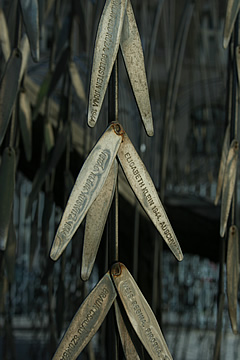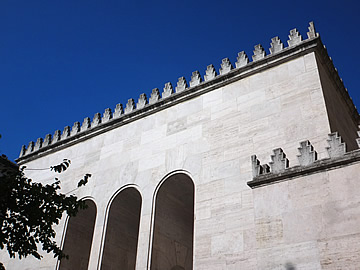

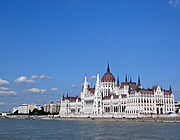
A European city with a long and sometimes troubled history, with an awful lot to see. I remember particularly Shoes on the Danube, some wonderful contemporary bronze statues including the Magyar chieftains at Heroes Square, the beautiful Parliament building, Matthias Church and the warrior statues guarding the entrance to Fisherman's Bastion.
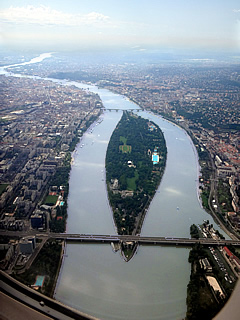
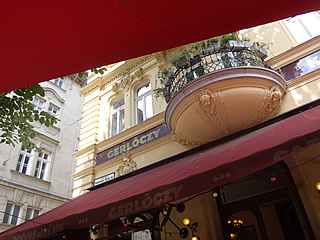
We arrived in time to have a cheese-oriented lunch at our hotel, the Gerloczy, in a great location with quirky rooms and a good café. And we were really aided in our discovery of the city by the copy of Andras Torok's Budapest: A Critical Guide which was in our room.
Budapest, like many great European cities, is located on an impressive river - in this case the mighty Danube, rising in Germany it flows almost 3,000 km east to the Black Sea.
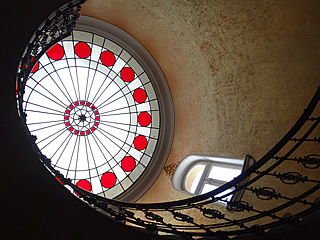
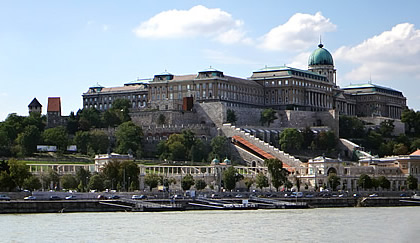
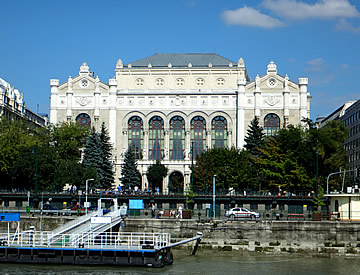
Budapest lies about 1200 km down river from the source and was founded over 2,000 years ago, first with a Celtic settlement which later became an important town occupied and developed by the Romans. When the Romans departed in the fifth century, tribal warfare ensued, until a peace treaty made the town Bulgarian. The form of the modern city developed from two Bulgarian military outposts: Buda and Pest on opposite shores of the Danube.
We bought a 72 hour Budapest card which gives free public transport and includes free ferry transport on weekdays so that afternoon, a Friday, we hopped on a ferry travelling up river to Castle Hill. It's a great way to get a feel for the extent and splendour of the city and we passed many landmark buildings that we would return to visit in the coming days.
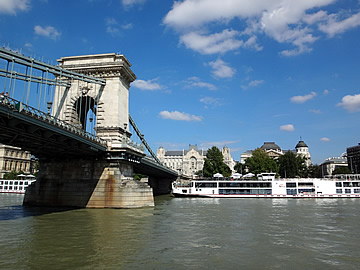

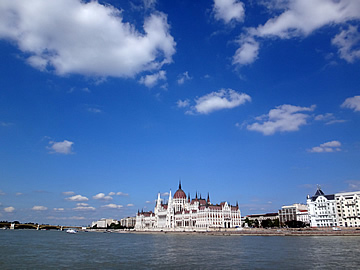

 Peter Mansfield
Peter MansfieldIn the cave system which riddles Castle Hill traces of humans 500,000 years old have been found.1 In more recent times the hill has provided refuge for people fleeing invading forces since the 13th century when the Mongols were expanding their borders. At this time a Royal Palace was built but it was not until the 15th century that the town really gained importance when the king married a Neapolitan princess. Many Italians came to settle here bringing new crafts and styles, Renaissance culture and much building ensued, including expansion of the Royal Palace.
Castle Hill on the west bank of the Danube in Buda, was developed over many centuries, suffering invasion and occupation, as did many towns and cities, during the European wars for territory and supremacy.

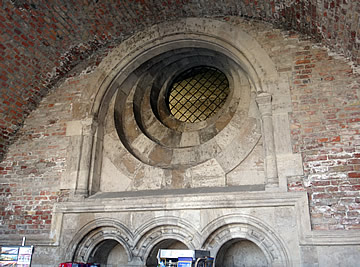
Under the Austro-Hungarian Empire the quarters of Obuda, Buda an Pest merged to form the city of Budapest in 1872, becoming the capital of the country.
Bad times returned during the Second World War with severe destruction and eventual occupation by Russian forces.
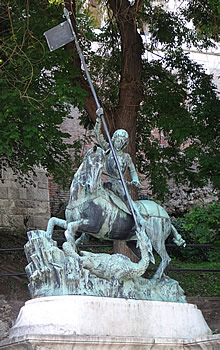
The 1956 revolution against the Russian puppet Communist government was crushed by overwhelming Warsaw Pact forces led by the Russians. Many thousands died.
The war had left the city in ruins but In the ensuing decades renovations have returned the city to its former glory.
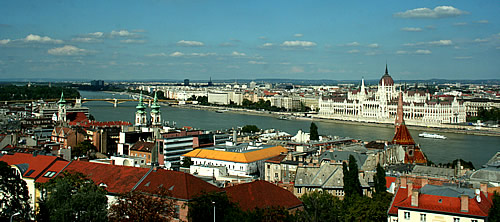
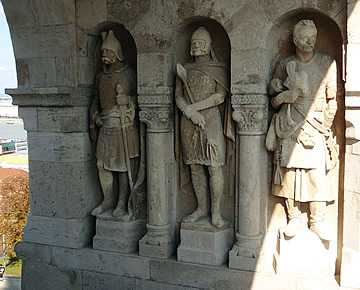
We made our way up from river level to Fisherman's Bastion, climbing the monumental steps which make for a very grand approach.
The Bastion was built at the end of the 19th century as a viewing terrace - previously a true castle existed here with defensive walls but towards the end of the 19th century it was decided to redevelop the site as there was no longer a need for such massive fortifications. The medieval walls encircled the city on the hill; some say that this section was protected by the Guild of Fisherman, hence the name for the new terrace.2
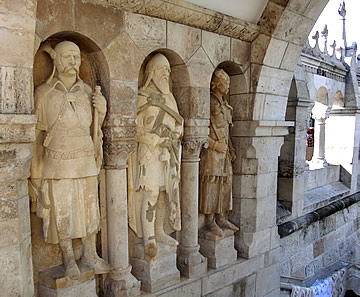
The seven towers along the length of the terrace represent the chieftains of seven Magyar tribes who came to settle in the land that was to become Hungary.2 The beginning of building for the renovated site in 1895 was in recognition of the millennium which had elapsed since then.
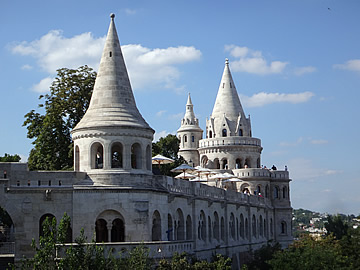
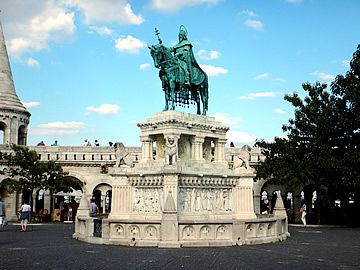
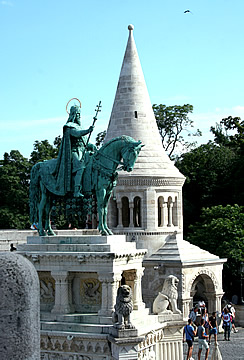
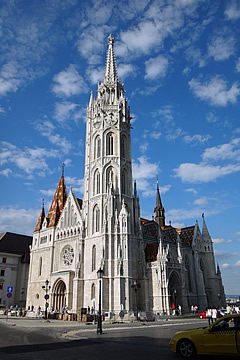
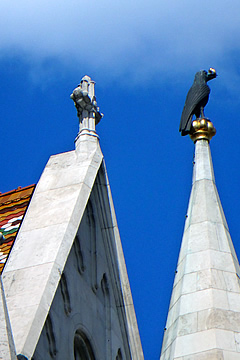
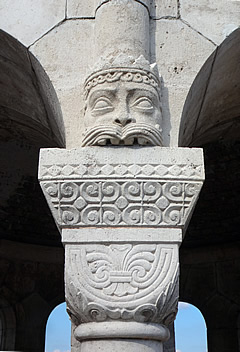
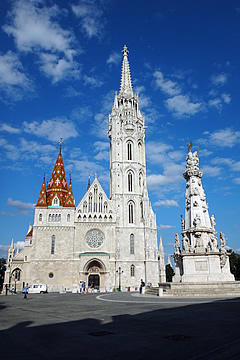
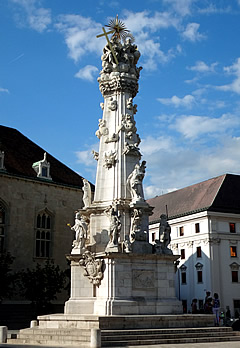
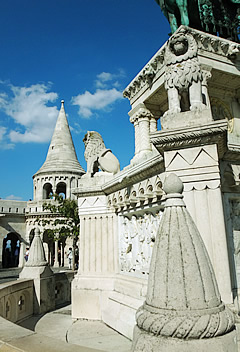
The beautiful Matthias Church stands on the square behind the terrace. Over 700 years old it was founded by Saint Stephen and has had its fair share of trials and tribulations. The original 11th century church was destroyed by Mongol invaders in the 13th century.
A Gothic church was built towards the end of the 13th century and it became the venue for coronations. In the 16th century it was converted to a Mosque by the Turks, its walls were whitewashed and its floors covered with carpets.
The church was in a poor state when major restoration commenced in the 19th century, only for it to be badly damaged again in the Second World War. But repairs were again made to create the church as we see it today, a gleaming neo-Gothic edifice.
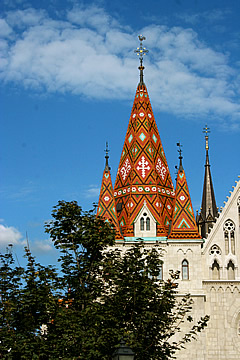
The interior is Gothic-arched with classic Art Nouveau style decoration.
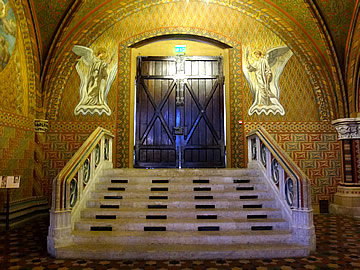
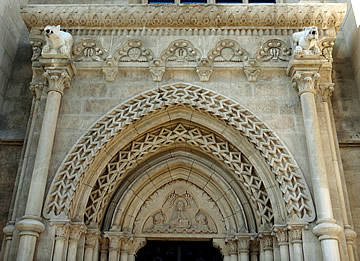
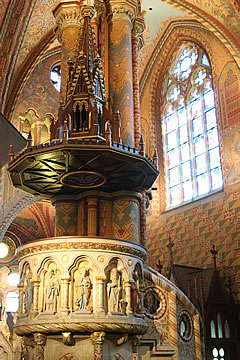
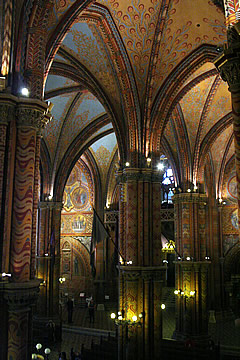
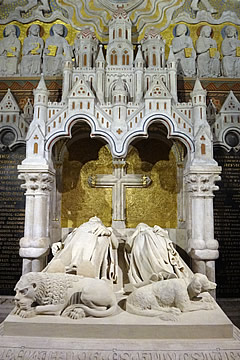
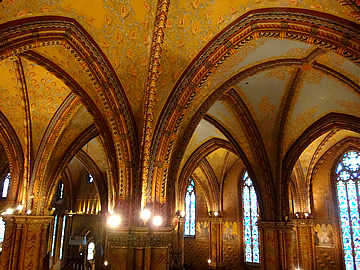
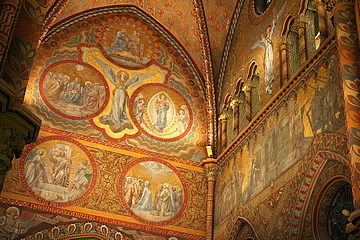
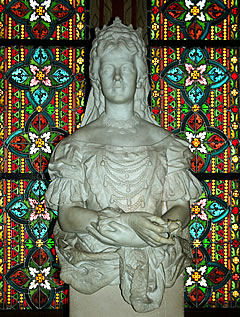
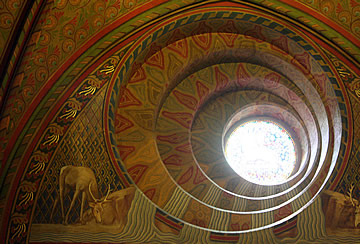
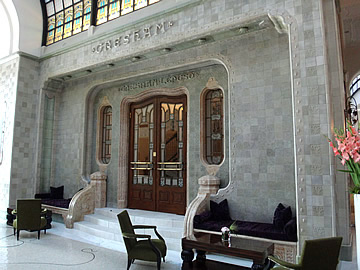
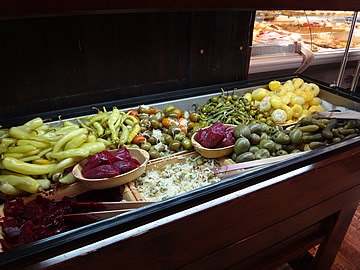
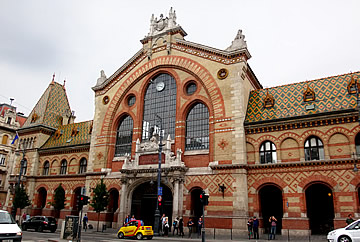
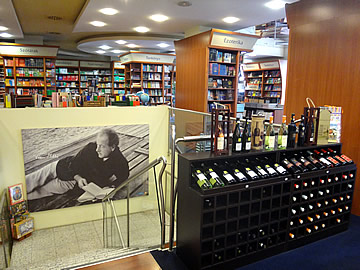
The Gresham Hotel stands close to the Danube in Pest, at the end of the Chain Bridge. Built in 1906 it is a fine example of Art Nouveau after extensive renovations which were completed in 2004.
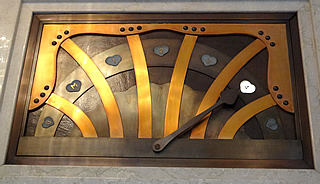


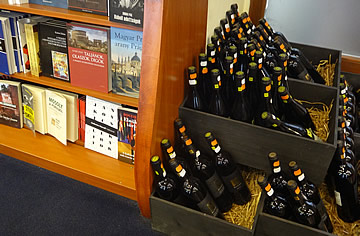

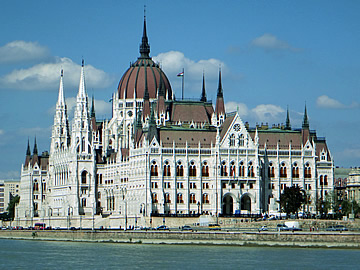
The Parliament building stands on the banks of the Buda on the Pest side. It is a mixture of styles, mostly neo-gothic, completed in 1904.
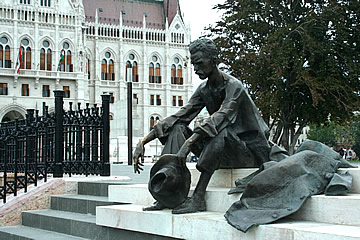
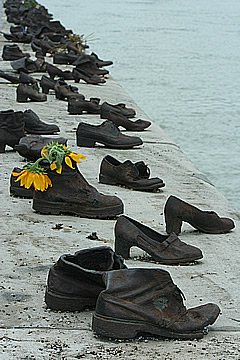
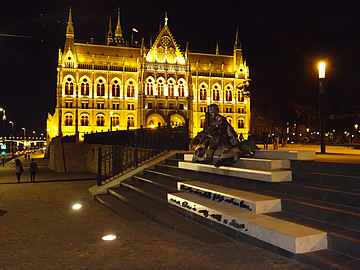
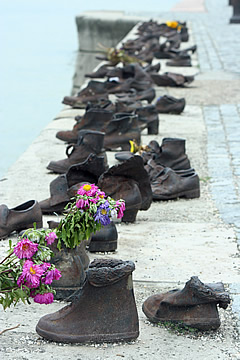
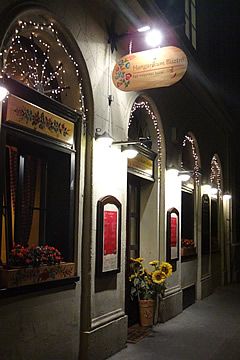
Nearby, on the embankment, is a really moving memorial to those who were shot here towards the end of the Second World War, their bodies dumped in the Danube. Shoes on the Danube manages to evoke immense sadness and a feel for the ordinary people so viciously executed in the shadow of their parliament.
We had a very good meal at Hungarikum Bistro close to parliament. Excellent goulash soup, chicken-stuffed pancakes, followed by duck and paprika pork. Afterwards we wandered back to the embankment to take night shots.

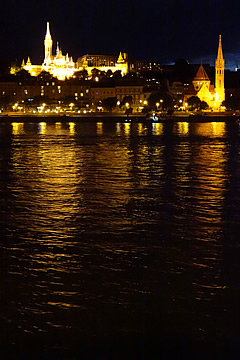
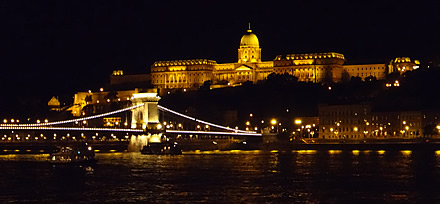
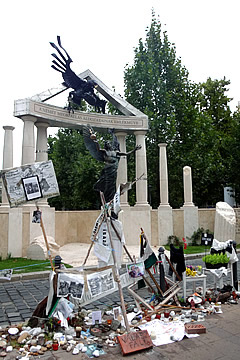
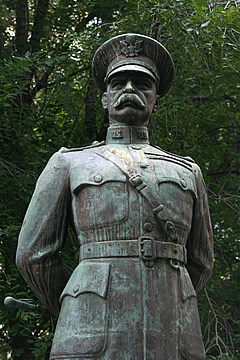
South east of the parliament building is Liberty square with an eclectic array of statues and memorials.
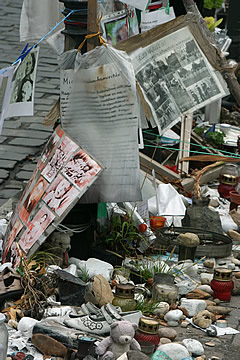
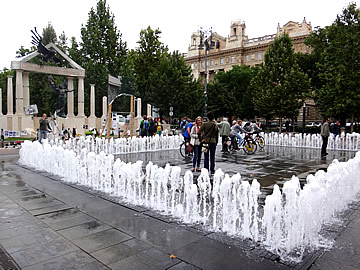
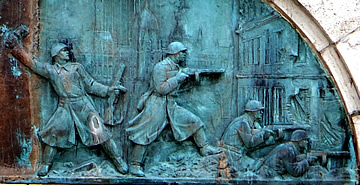
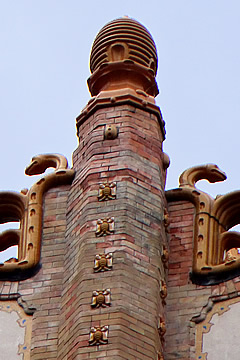
East of Liberty Square, on Hold Utca, is a good example of the local "Secessionist" style: the former Royal Postal Savings Bank, completed in 1901, has strong Art Nouveau elements with eastern and Hungarian folk art influences.
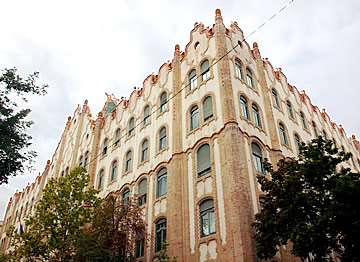
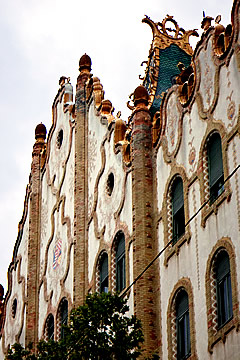
The building's architect, Odon Lechner, deliberately set out to create a unique national style. It's very "Gaudiesque"!
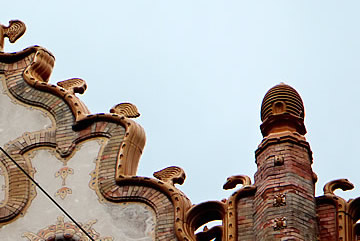
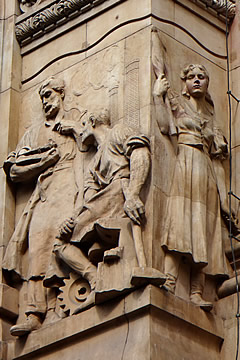
On the south east corner of the square is Magyar Nemzeti Bank, with some very nice reliefs on the facade.
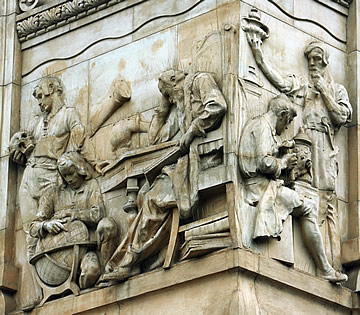
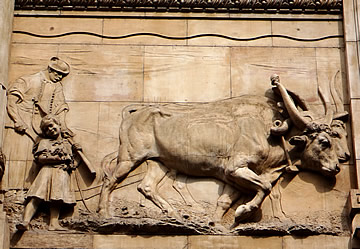
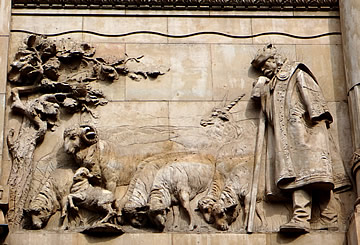

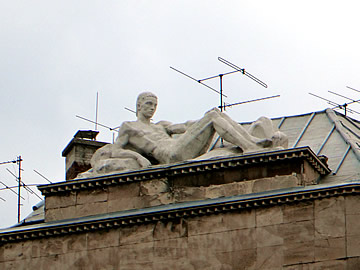
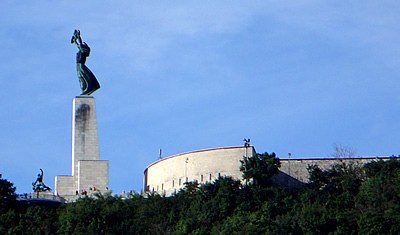
Gellert Hill was of strategic importance in the past, hence the fortress, or Citadella, built here in the mid-nineteenth century by the Hapsburgs to keep an eye on a potentially unruly populace.
The comprehensive view of the city which made it a good lookout point nowadays entices tourists to see the city spread out below.
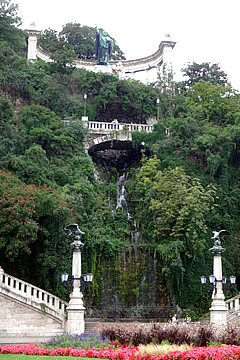
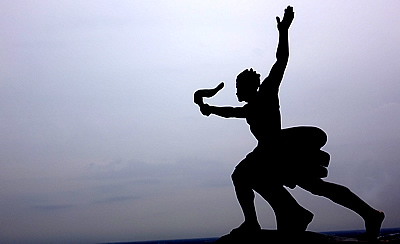
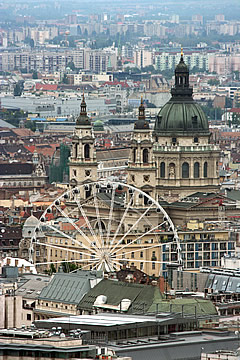
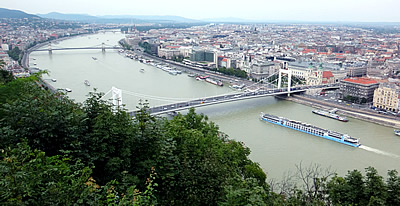
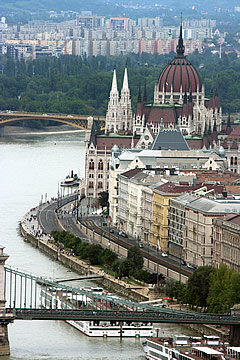
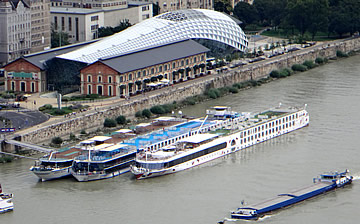
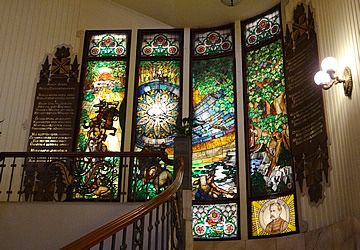
At the base of the hill is the Gellert Hotel and Spa. We didn't sample any of the spas in the city but the buildings themselves are worth a look. The Gellert is Art Nouveau with a vengeance!
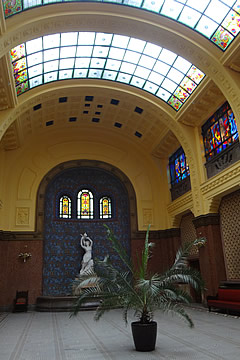
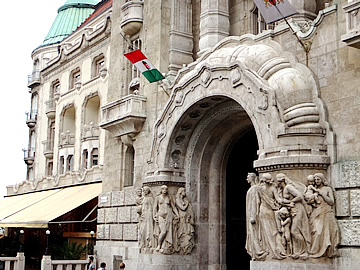
The spas offer not only hot and cold pools, indoor and out, but also massage rooms, steam baths, saunas and a host of other services.

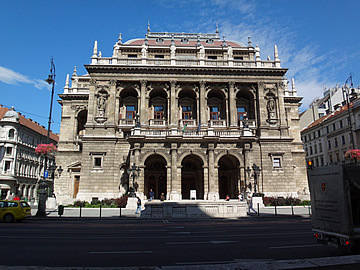
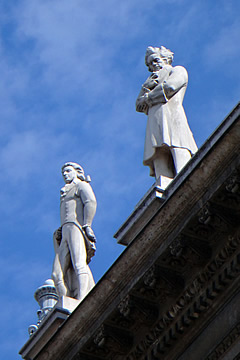
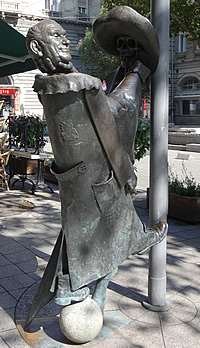
We walked up Andrassy Ut to visit the Heroes Monument - it's a long walk!
I love all the bronze sculpture scattered about the city, especially those of more contemporary people. Nagymezo Utca, at the junction with Andrassy Ut, is the location of several theatres and there are bronze statues of performers here too.
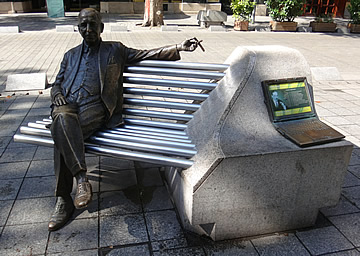
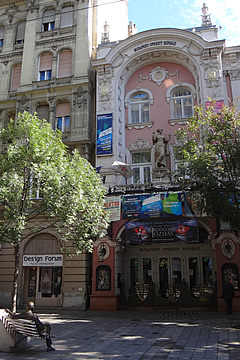
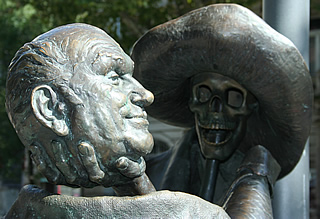
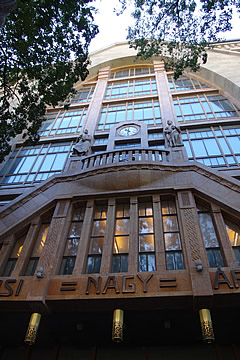
We stopped for drinks at the celebrated Alexandra Bookcafe on the first floor of the Parisi Nagyaruhaz (Paris Department Store) in the dazzling Lotz Hall - the ceiling frescoes here were created by Karoly Lotz. It's an immensely impressive place in which to take coffee!

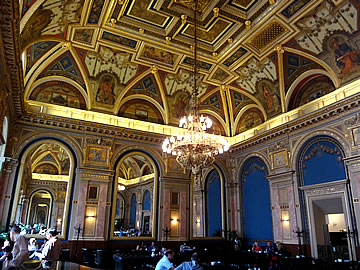
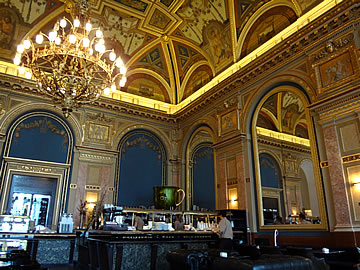
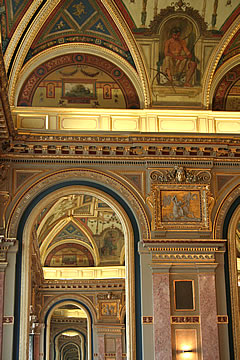
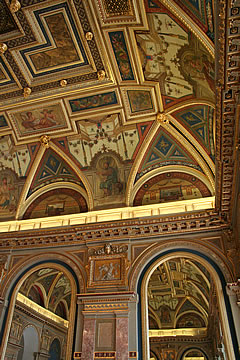
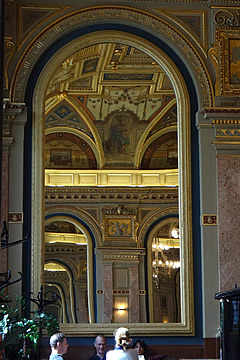
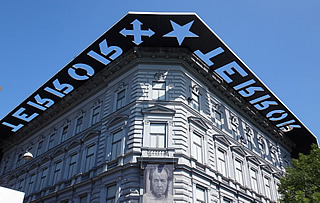
The House of Terror at Andrassy Ut 60 was once used by Hungarian Nazis - the Arrow Cross Party - and the Hungarian State Protection Authority - AVH - the Hungarian secret police. Prisoners here were tortured, held without trial, sent to forced labour and concentration camps.
In the spring of 1944 Hungary was occupied by the Nazis. Hundreds of thousands of Jews were forced into ghettos or deported to forced labour or extermination camps or summarily executed and thrown into the Danube, all their possessions confiscated. Soviet occupation took over early in 1945. Over 600,000 Hungarians were sent to gulags - Soviet concentration camps.1
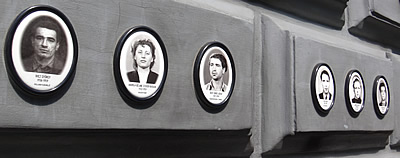

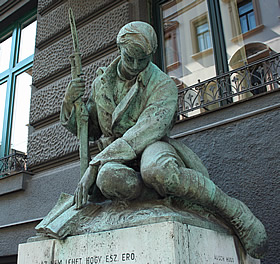
The House of Terror serves not only as a museum but also as a memorial to the many victims of the Nazi and Soviet occupations.
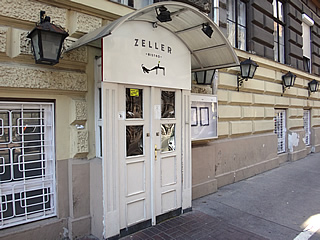
We had a very good meal at Zeller Bistro, on Izabella Utca off Andrassy Ut, one evening - loved the complimentary sparkling elderflower wine from the owner's estate. Fabulous crispy fish and duck salad starters and excellent pork tenderloin and chicken paprika to follow.
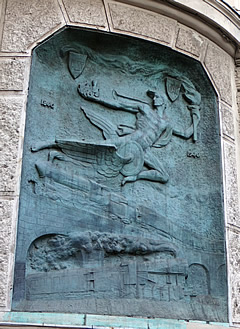
At the north end of Andrassy Ut Heroes Square is dominated by an impressive monument, the Archangel Gabriel flanked by seven Magyar chieftains and fourteen historical figures.
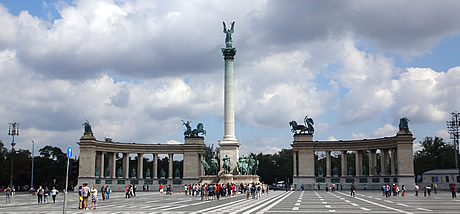
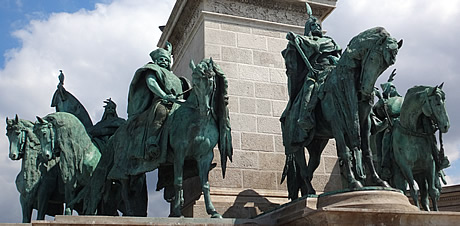

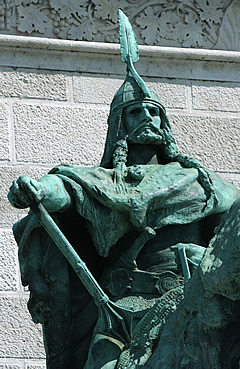
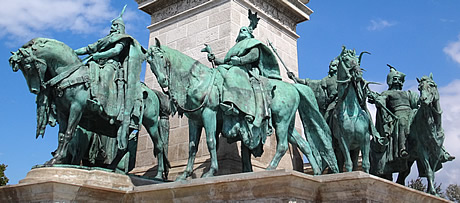
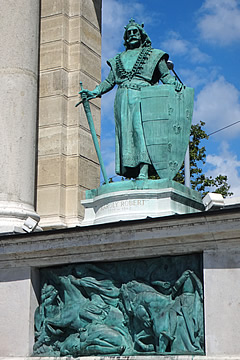
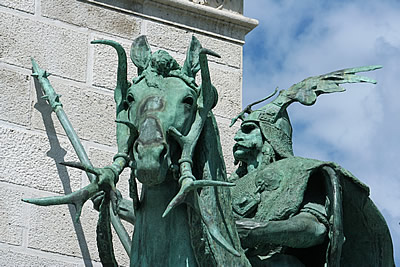
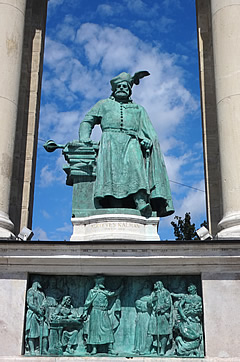
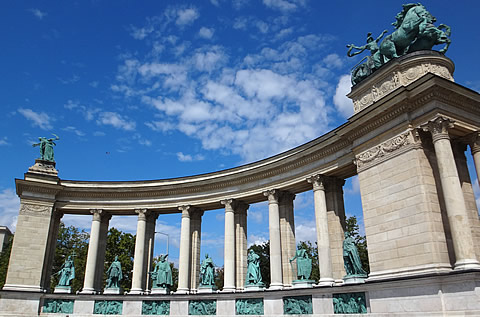
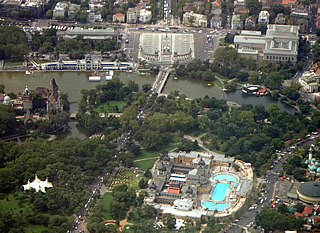
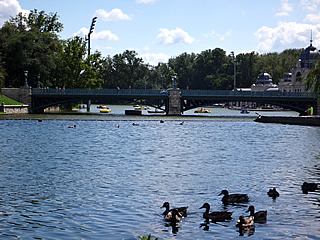
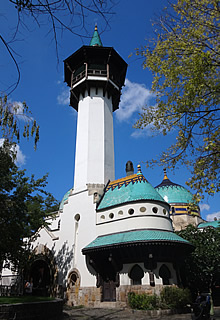
Heroes Square stands on the edge of City Park which, among other things, is home to the zoo, gardens, a boating lake (which becomes an ice rink in winter) and Széchenyi Baths.
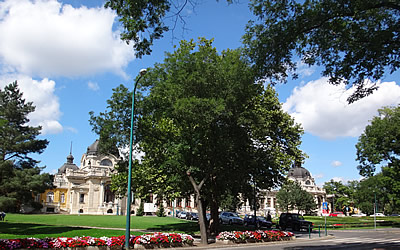
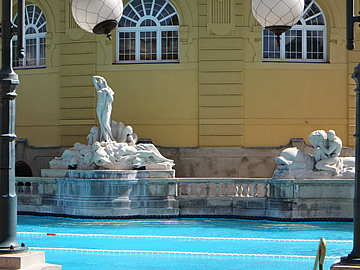
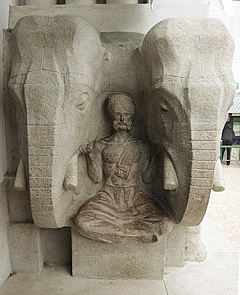
Széchenyi Baths are very impressive with fine water-themed mosaics.
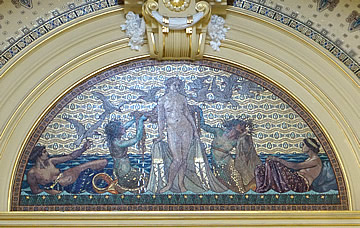
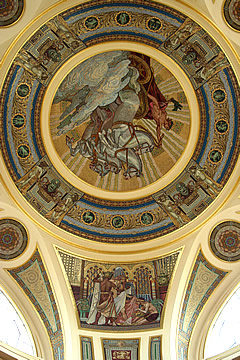
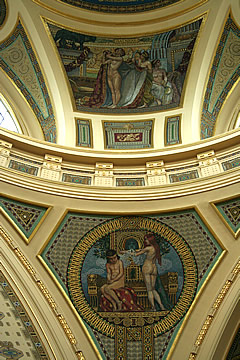
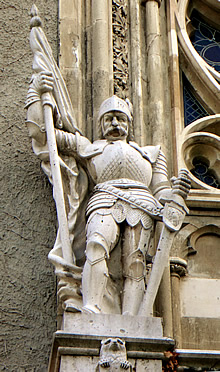
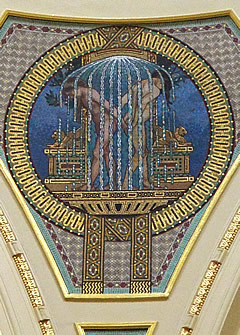
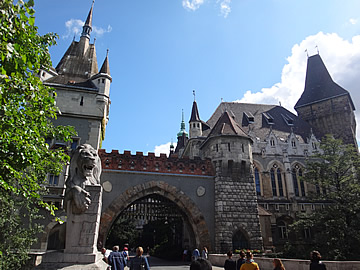
Vajdahunyad Castle was built in 1896 to showcase the various architectural styles found in Hungary.
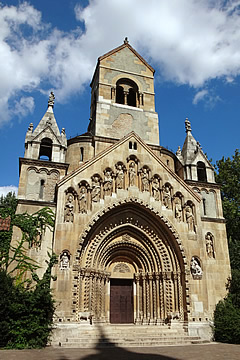
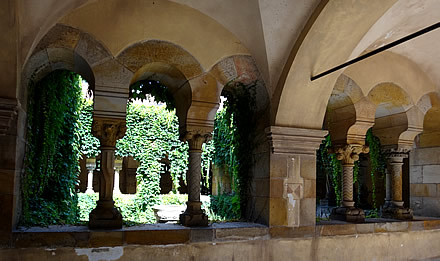
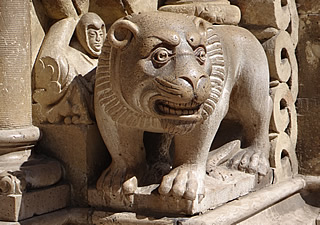
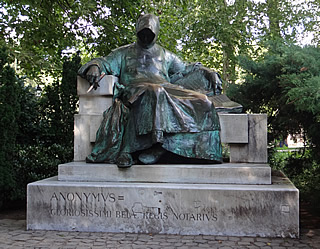
A memorial to the 1956 Hungarian revolution stands on the west side of the park. A mass of rusting columns gradually come together to form an arrowhead of steel. It symbolises the coming together of the people in a show of force against the occupying forces.
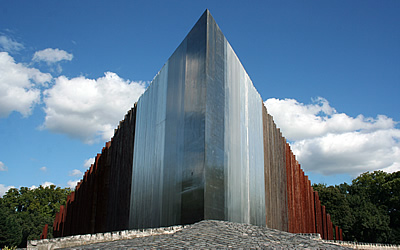
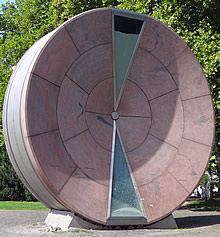
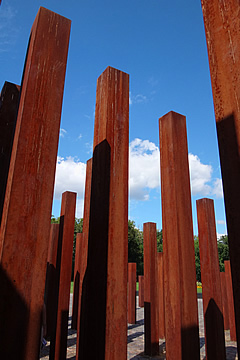
North of the 1956 memorial is a massive hourglass timewheel, 8 meters in diameter and weighing 60 tons. The sand should take one year to flow from the upper to the lower glass chambers, running out on New Year's Eve, when the wheel is turned through 180degrees to begin a new cycle. We couldn't see if sand was flowing through or not. However, as we were visiting in August, and a very small proportion of the sand had moved to the lower chamber, I think it was broken.


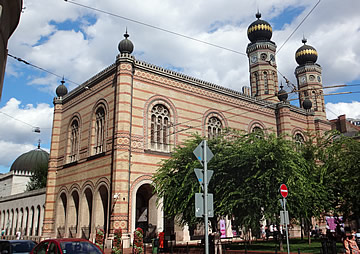
The synagogue stands at the intersection of Dohany Utca and Wesselenyi Utca and is the largest synagogue in Europe, in the world second in size only to the Temple Emanu-El in New York.4 The building can accommodate around 5,000 people.
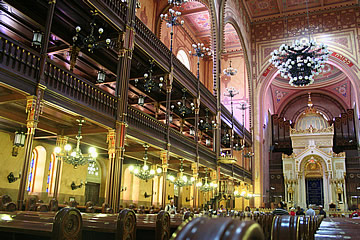
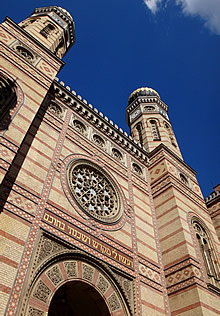
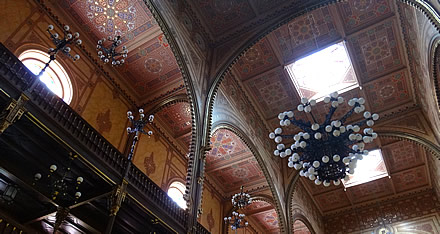
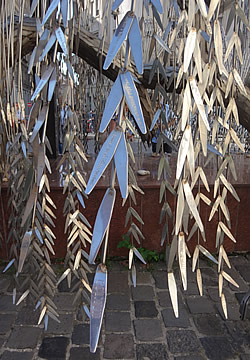
It was built in the middle of the nineteenth century with distinctive Oriental/Moorish elements which were so admired that many future synagogues were built in a similar style.
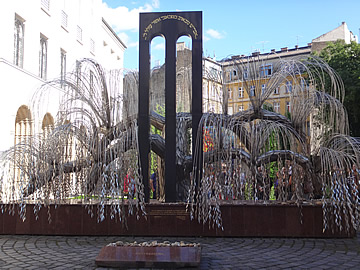
The synagogue was part of the Jewish ghetto during the Second World War. Very unusually, through force of circumstance, a cemetery was created next to the synagogue for thousands of victims of the nazis.
In the courtyard is a memorial tree, the leaves bear the names of the dead and disappeared.
